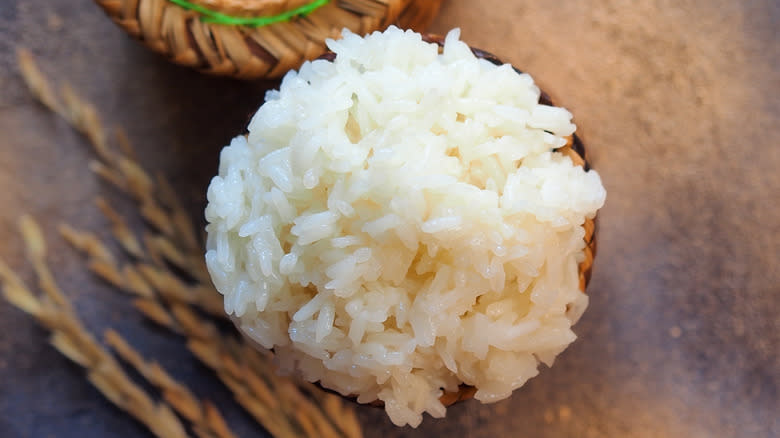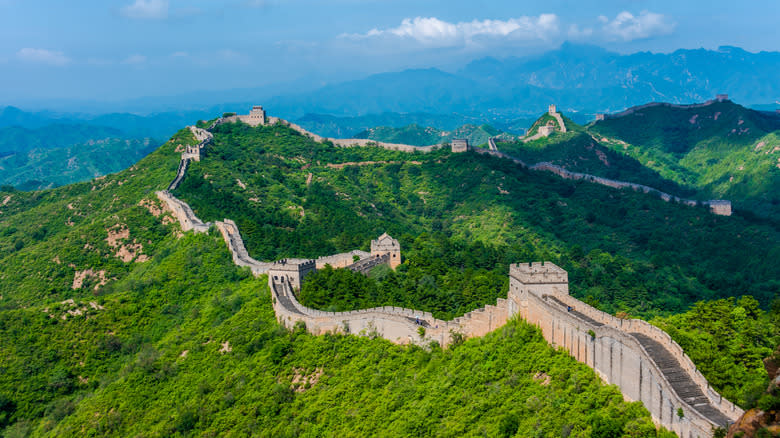The Historical Connection Between Sticky Rice And The Great Wall Of China

Known for its chewy texture and a gummy or glue-like consistency when cooked, sticky rice (also known as sweet rice or glutinous rice, though there is no gluten at all in the rice) is a staple of many Asian cuisines, used in both sweet and savory dishes. Smithsonian Magazine calls it the national dish of Laos and it's one of the two types of rice you'll find in nearly every Thai meal. In Chinese cuisine, it's popularly used in zong zi dumplings, tang yuan soup, and the Eight Treasure rice pudding, a show-stopping rice dessert that binds families during the Lunar New Year. Turns out, sticky rice also helped bind the bricks together in the Great Wall of China.
Chinese scientists looking into the mortar used to fill the gaps between the bricks and blocks in the Great Wall of China discovered that workers in the Ming Dynasty mixed sticky rice soup with slaked lime (or limestone that had been heated and exposed to water, a typical mortar ingredient) to form an organic-inorganic composite mortar. It wasn't especially surprising to the scientists, who knew that similar technology had been used by builders in China for more than 1,500 years, notes National Geographic.
Read more: 21 Delicious Ways To Use Up Leftover Rice
Why Sticky Rice Works In The Great Wall

Rice typically contains amylose and amylopectin starches. According to Food Navigator, due to a genetic mutation, sticky rice lacks amylose and only has amylopectin. It's the high proportion of amylopectin that causes sticky rice to be, well, so sticky. It's also the amylopectin that makes the composite mortar containing sticky rice such a strong building material, and why it was used on the Great Wall of China.
Scientists analyzed the mortar composite and discovered that the presence of amylopectin restricted the growth of calcium carbonate crystals (from the lime), which resulted in a smaller and "more tightly bonded mixture that's especially water resistant and more likely to hold its shape over time" (per National Geographic). The composite mortar worked so well that in some areas of the Great Wall of China, weeds still cannot grow through the bricks, while other buildings that used the sticky rice composite mortar have been known to withstand both natural and man-made threats, including earthquakes and a bulldozer, notes Ripley's. Chinese scientists have also concluded that the sticky rice composite mortar is the ideal material to use for restoring ancient buildings, which means that sticky rice will likely also have a future connection with the Great Wall of China.
Read the original article on Tasting Table.

